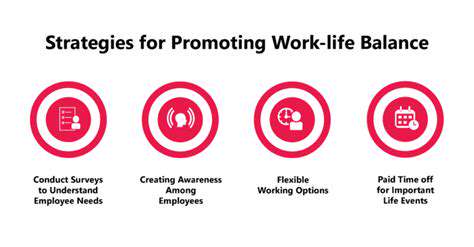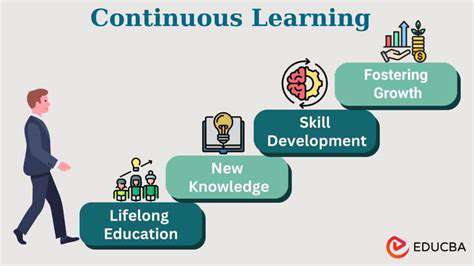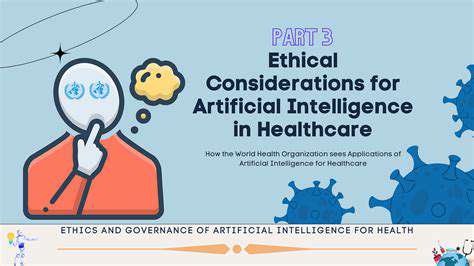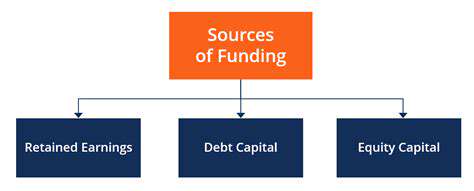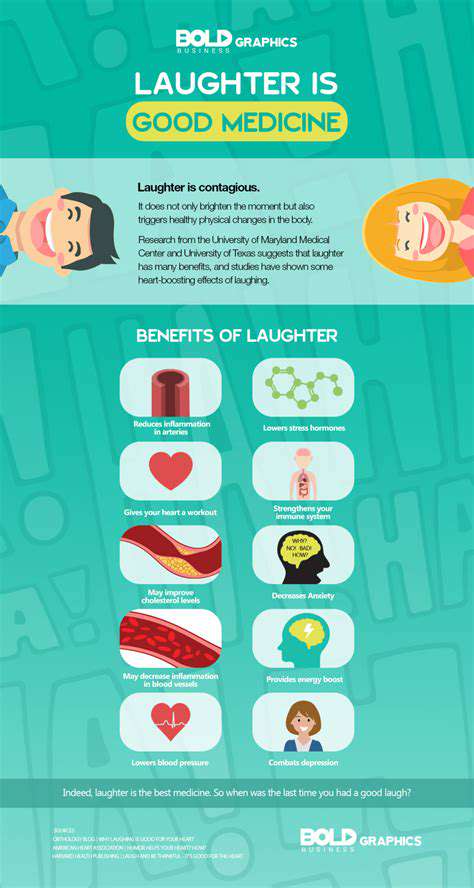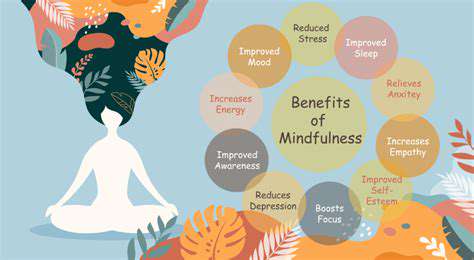The Power of Music in Mental Health Initiatives
Music's influence on neural pathways goes far beyond momentary pleasure. Research reveals that consistent musical engagement physically reshapes brain architecture, particularly in regions governing memory, language processing, and auditory perception. These structural adaptations, commonly seen in professional musicians, demonstrate our nervous system's remarkable ability to reorganize itself in response to musical stimulation. The complex interplay of tones and rhythms strengthens neural connections, potentially enhancing various cognitive abilities.
When we listen to music, it activates multiple brain areas simultaneously, creating a symphony of neural activity. This isn't passive reception but rather an active dialogue between sound and cognition. Our brains don't just process music - they participate in creating the musical experience through complex interpretation and response mechanisms.
Emotional Resonance: Music's Role in Evoking Feelings
Few stimuli can match music's ability to access our emotional core. From uplifting joy to profound melancholy, musical elements interact with our personal histories and associations to create powerful affective responses. A simple melody can transport us across decades, reviving forgotten emotions attached to specific life moments. This emotional potency makes music a universal language of human experience.
The Power of Music Therapy: Healing Through Sound
Clinical music therapy represents one of the most promising applications of sound-based intervention. Trained therapists employ carefully selected musical activities to address various psychological and physiological challenges. What makes this approach particularly valuable is its ability to bypass verbal limitations, reaching emotional states that words cannot express. For individuals struggling with communication difficulties, music provides an alternative channel for self-expression and connection.
The therapeutic environment transforms music into a medium for emotional exploration and regulation. Unlike many clinical interventions, music therapy sessions often feel inherently enjoyable, removing barriers to engagement. This natural appeal enhances treatment adherence while facilitating profound psychological work.
Music and Memory: Echoes of the Past
Our brains encode musical memories with remarkable fidelity. Certain songs can instantly recall detailed sensory memories - the scent of a childhood home, the texture of a first love letter. This mnemonic power explains why music therapy shows particular promise in dementia care, where it can revive seemingly lost memories and connections. The durability of musical memory suggests deep evolutionary roots in human cognition and social bonding.
Music and Stress Reduction: A Calming Influence
Modern life's constant demands make effective stress management crucial. Music offers a readily available and inexpensive relaxation tool. Specific auditory patterns can trigger the parasympathetic nervous system, lowering heart rate and reducing cortisol levels. For maximum benefit, researchers recommend choosing music with 60-80 beats per minute - roughly matching the resting human heart rate. This synchronization creates physiological harmony that promotes deep relaxation.
Music and Social Connection: Building Bridges Through Sound
Throughout human history, music has served as a social glue. From ancient drum circles to modern concert halls, shared musical experiences create powerful communal bonds. Group music-making synchronizes not just sound but also brain waves and heart rhythms among participants. This neural coupling may explain music's unique ability to foster empathy and cooperation across cultural divides.
The Future of Music and Mental Well-being: Exploring New Possibilities
Emerging technologies are expanding music's therapeutic potential. Biofeedback systems can now adjust musical elements in real-time based on physiological responses. Such innovations enable truly personalized musical interventions tailored to individual neurological and emotional profiles. As we deepen our understanding of music-brain interactions, we uncover new ways to harness sound for mental health and cognitive enhancement.
Music Therapy Techniques in Practice

Music Therapy Techniques: Active Listening
Active listening in therapeutic contexts requires nuanced observation and response. Practitioners must interpret subtle physiological cues - changes in breathing patterns, facial microexpressions, or postural shifts - that reveal the music's impact. This attentive approach allows therapists to adjust musical selections dynamically, creating optimal conditions for emotional processing. The process resembles a musical conversation where patient responses guide the therapist's next intervention.
Therapeutic listening differs from casual music enjoyment in its structured intentionality. Clinicians maintain acute awareness of their own reactions to avoid projecting personal associations onto the patient's experience. This disciplined approach ensures the focus remains on the patient's unique response patterns and therapeutic needs.
Music Therapy Techniques: Improvisation
Clinical improvisation provides a musical sandbox for emotional exploration. Without requiring formal training, patients can express complex feelings through spontaneous sound creation. This approach proves especially valuable for trauma survivors who may struggle with verbalizing painful experiences. The non-representational nature of musical expression provides psychological safety while allowing authentic emotional release.
Guided improvisation sessions often begin with simple parameters that gently structure the creative process. As patients gain confidence, they can explore increasingly complex musical interactions, developing new emotional vocabulary in the process.
Music Therapy Techniques: Guided Imagery
Combining music with visualization creates powerful therapeutic synergies. Therapists carefully select musical pieces that evoke specific emotional landscapes, then guide patients through structured imagery exercises. This technique can access pre-verbal memories and facilitate processing of experiences that resist conventional talk therapy approaches. When working with trauma, therapists gradually introduce challenging material only after establishing strong emotional safety.
The multisensory nature of musical imagery - combining auditory stimulation with visual imagination - creates rich therapeutic material. Patients often report these experiences as more vivid and emotionally accessible than traditional verbal recall.
Music Therapy Techniques: Rhythmic Activities
Rhythmic entrainment - the synchronization of biological rhythms with external beats - underlies many music therapy applications. Group drumming circles demonstrate this principle effectively, creating communal coherence through shared rhythm. Research indicates such activities can regulate nervous system functioning, making them particularly effective for anxiety management. The predictability of rhythmic patterns provides a stabilizing framework for emotional expression.
These activities scale effectively from individual to group settings. In rehabilitative contexts, rhythmic exercises can help retrain motor functions while simultaneously addressing emotional and cognitive dimensions of recovery.
Music Therapy Techniques: Songwriting and Composition
Creating original music allows patients to externalize and reorganize their internal experiences. The compositional process - whether writing lyrics, crafting melodies, or arranging musical elements - provides concrete form to abstract emotions. This transformation from internal feeling to external artifact facilitates psychological distance and perspective. Completed compositions often serve as meaningful markers of therapeutic progress.
Music Therapy Techniques: Listening to Music
Prescriptive music listening represents the most accessible therapeutic application. Clinicians select pieces based on specific therapeutic objectives - relaxation, energy regulation, or emotional processing. Evidence suggests that personalized playlists can significantly enhance mood regulation in clinical populations. The portability of this intervention allows patients to extend therapeutic benefits beyond clinical settings.
Effective music selection considers both universal principles and individual preferences. While certain musical characteristics reliably produce specific effects, personal associations ultimately determine a piece's therapeutic value for each patient.
Integrating Music into Mental Health Programs
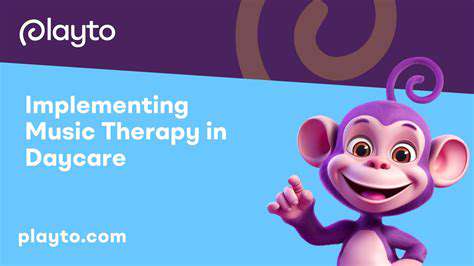
The Power of Music Therapy
Contemporary mental health programs increasingly incorporate music-based interventions. Clinical applications range from reducing preoperative anxiety to supporting addiction recovery and managing chronic pain. What distinguishes music therapy from recreational music use is its systematic approach - each intervention targets specific clinical objectives with measurable outcomes. Treatment plans integrate assessment tools to track progress and adjust interventions accordingly.
The flexibility of musical engagement allows therapists to meet patients at their current functional level. For severely impaired individuals, simple rhythm activities may represent the starting point, while others might immediately engage in complex improvisation or composition work.
Music's Impact on Mood Regulation
Music's mood-altering properties stem from its direct access to emotional processing centers. Neuroimaging reveals that musical stimulation activates the amygdala, nucleus accumbens, and other limbic structures involved in affective regulation. This neural overlap explains why music can so effectively modulate emotional states that resist cognitive intervention. Therapeutic applications carefully sequence musical elements to guide emotional transitions.
Effective mood regulation strategies often employ the ISO principle - matching the patient's current emotional state with corresponding music, then gradually shifting musical qualities to guide the emotional trajectory. This approach respects the patient's current experience while facilitating movement toward therapeutic goals.
Utilizing Music for Stress Reduction
Music-based stress reduction techniques have gained empirical support across clinical populations. Controlled studies demonstrate that just 30 minutes of preferred music listening can produce cortisol reductions comparable to some pharmaceutical interventions. When combined with breathing exercises or progressive muscle relaxation, the effects amplify significantly. Healthcare settings increasingly use presurgical music interventions to reduce anesthetic requirements and improve recovery metrics.
The Role of Music in Cognitive Enhancement
Music's cognitive benefits extend beyond simple memory triggers. The Mozart Effect research sparked interest in music's potential to enhance spatial reasoning, but subsequent studies reveal broader applications. Rhythmic auditory stimulation can improve gait in Parkinson's patients, while melodic intonation therapy helps stroke survivors regain speech. These applications leverage music's unique ability to engage multiple brain systems simultaneously.
In educational settings, background music with specific tempos can optimize focus duration for students with attention difficulties. The key lies in matching musical characteristics to specific cognitive tasks and individual neurodiversity.
Music as a Social Connector
Community music programs demonstrate music's power to rebuild social connections in isolated populations. Group singing interventions show particular promise for reducing loneliness in elderly populations, with measurable improvements in both psychological and immunological markers. The synchronous nature of collective music-making fosters interpersonal attunement that carries over into non-musical interactions.
Music-based social skills training helps individuals on the autism spectrum navigate complex social cues. The structured yet flexible nature of musical interaction provides a safe environment for practicing social reciprocity and emotional attunement.

